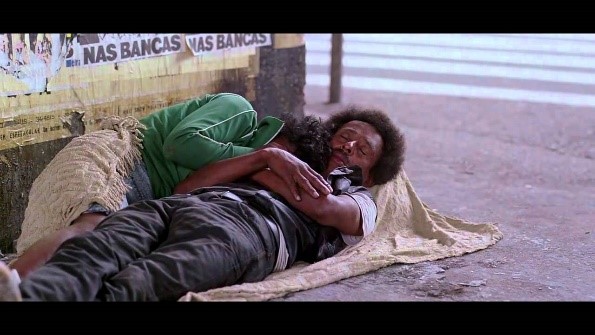Enticing the Photographic Visual Displeasures
Throughout the 19th-20th century ever since the democratically-allowing Kodak camera was invented, the world of photography had taken a turn beyond that of previously known as ‘portraiture’. Subjects had no longer been required to sit still for hours while the artist attempted to make the most flattering of depiction. The world of photography was suddenly flooded by the mundanities of readily expressive nature of human beings, the subliminally charged and complex expressions of royal families to the downrightly humble servant of Vermeer’s ‘Lady with a Pearl Earring’; the prior seemed to carry very little grandeur into the tradition of everyday photography, at least not in the same light.

Queen Marie Antoinette of France and two of her Children Walking in The Park of Trianon
.
1785. Adolf Ulrik Wertmüller.
This was not, however, the end of the mutative episodes that the visual culture world had to witness. When the isolation of royalty, exclusivity, and sublimity revel in the glory of traditional Kantian rationale of beauty[1] – one that mesmerized and perceptually captivating – they beg for the seer to guess, assume, or even fantasize the “whatever it is that lay further beneath the layer of the canvas”. The mundanity of everyday photography destroys this je ne sais quois (French for ‘something’ that does not quite have a name). Emotions are raw and messages are almost directly readable (or sometimes no message at all). But the one thing that comes next after this de-compression of dense sublimity is the displeasure when the mundane forced its way into direct depiction of reality. When photography presents imageries of those who suffers, the vagrants, the poor, and the homeless while the masses struggled to find ‘beauty’ in them. This therefore often results in images being labeled as repulsive, distasteful, and unpleasant to look at.
Scenes from The Documentary ‘Baraka’. Directed by Ron Fricke.
Photo 1: A homeless couple sleeping under the bridge in cold (Left)
Photo 2: Garbage pickers in India (Right)
Displeasure has been around for a long time. Sparking debates like wild fire over what is “beautiful” and what is visually unsettling. Ever since the aesthetic field of study emerged, the drive has always been to investigate what composes an image to be perceptively ‘pleasing’. Pleasing here resolves to qualities beyond the general sense of beauty but also towards purpose, and intention. Contemporary art has introduced us that beauty do not lie only in nature and mathematically pleasing measurement of rules and compositions, let alone facial features of a peerless model. There are other ways to please through an image depiction outside the confine of beauty – ugly dichotomy. Both traditional idea of beauty and its reasoning took heavy battering through depiction of mundane reality effectively grounding us and forcing us to review our capability to sense, empathize, sympathize. Through these new modes of looking, beauty is no longer always attractive and ugliness is no longer always repulsive – perhaps they are entirely two separate emotional feedback unconnected by two different polar.
In 1889 when Eiffel Tower was erected following the event, a group called themselves as the committee of 300 stood against the tower and protested remarking that the tower was a bucketful of bolted tin monstrosity[1] shaming the other iconic landmarks of Paris such as the Louvre, the gothic majesty that is Notre dame, and the Arc De Triomphe. Today, there is hardly any disputes over the Eiffel tower. It is now being regarded as one of the most famous Parisienne icon. What this event signified was that perception and taste change in accordance to time. Time shapes perspective and taste. Nothing is ever aesthetically static. What is required to enjoy a particular work of art / architectural design is to re-assume the historical perspective in which it was first viewed upon. Only then can we understand the span of its aesthetic from past to present.
So, what then of imageries so confronting that one shudders and cringes in the face of its presence? Journalistic photography has shared us the most moving, imposing, unsettling, and even displeasing to the vision, situations framed right out of reality. These images do not and cannot be taken for granted because its beauty span beyond that of attractiveness but touches upon the idea of outrageousness, sorrow, anger, and helplessness. They aim to appeal and sharpen our sensitivity towards the very nature of humanity – our humanity and the willingness to feel the burden of others, to empathize through Aristotelian Catharsis[2]. Beauty, questionably, is no longer found through stimulus embedded on a medium but rather at how one delves into the self and discover that one is still capable of making connection to that depiction. That is how aesthetic operates on the level of visual displeasure and consequently how it also pleases.
Photo 1: The Burning Monk. 1963. Malcolm Browne (Left)
Photo 2: The Vulture and the Little Girl. 1993. Kevin Carter (Right)






Comments :